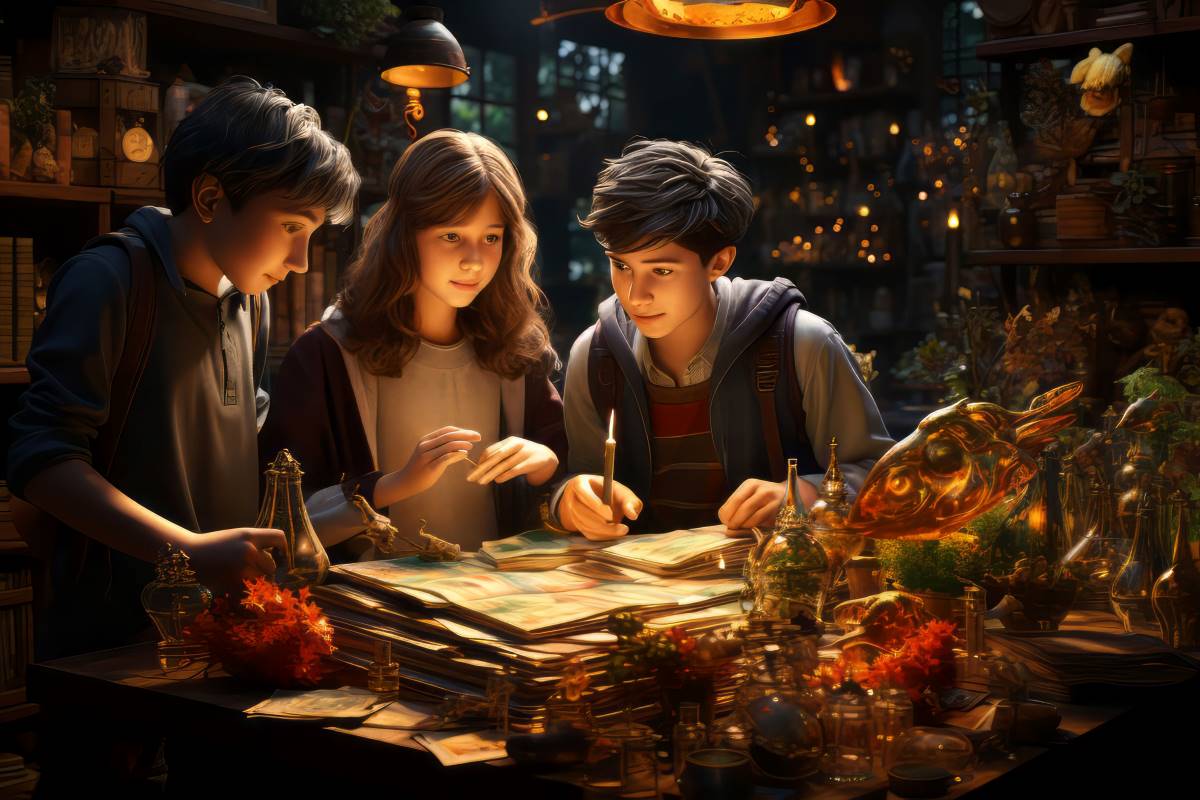Nestled in a captivating landscape, Peragarth is more than just a destination; it’s a vibrant tapestry woven with rich history and diverse culture. Visitors often find themselves enchanted by its unique blend of traditions and modern influences. Whether you are an explorer seeking new adventures or someone looking to immerse yourself in the local way of life, Peragarth offers something for everyone. As we take a deep dive into this remarkable region, you’ll discover what makes Peragarth truly special—its fascinating past, colorful customs, and the spirit that binds its people together. Let’s embark on this journey through time and tradition!
A Brief History of Peragarth
Peragarth’s history is a tapestry woven with ancient threads. It dates back centuries, rooted in diverse influences that shaped its identity.
Initial settlements were primarily agrarian. The fertile lands attracted early inhabitants who cultivated crops and established trade routes. Over time, these connections expanded beyond borders.
As civilizations rose and fell, Peragarth experienced waves of change. Invaders brought new ideas and technologies, blending with local customs to enrich the cultural fabric.
The middle ages marked significant development. Artisans flourished, creating unique crafts that became symbols of Peragarth’s heritage.
In more recent times, colonial powers left their mark on the region’s governance and social structures. Yet through it all, the spirit of Peragarth endured—resilient against external forces while maintaining its core values. This historical journey continues to shape modern-day Peragarth into a vibrant community rich in stories waiting to be told.
Cultural Influences on Peragarth
Peragarth is a tapestry of diverse cultural influences. Its history reflects a rich blend of indigenous traditions and external interactions that have shaped its identity.
Trade routes once crisscrossed the region, bringing merchants and travelers who shared their customs. This exchange contributed to the vibrant arts seen today in local crafts and music.
Religious practices also play a significant role in Peragarth’s culture. Elements from various belief systems coexist harmoniously, adding depth to community rituals.
The culinary landscape showcases this fusion as well. Traditional dishes incorporate flavors from neighboring regions, creating unique gastronomic experiences for both locals and visitors alike.
As modern influences seep in through media and technology, Peragarth continues to adapt while holding onto cherished traditions. The interplay between past and present fuels its dynamic culture, making it an ever-evolving entity within the broader world context.
Traditional Customs and Practices in Peragarth
Traditional customs in Peragarth are a vibrant tapestry woven over generations. The community cherishes rituals that reflect its rich history and values.
One standout practice is the communal gathering during harvest time. Villagers come together, sharing food and stories, reinforcing their bonds while celebrating abundance.
Craftsmanship plays a significant role too. Artisans continue to pass down techniques for pottery and weaving through apprenticeships, ensuring skills are preserved.
Daily life also includes unique greetings that change with the seasons, showcasing respect for nature’s cycles. This connection to the environment extends into traditional medicine practices based on local herbs and plants.
Family ties remain strong here; elders hold an esteemed position within households as keepers of wisdom and tradition. Their storytelling sessions at twilight captivate younger generations, keeping folklore alive amidst modern influences.
Every custom embodies the spirit of Peragarth—a blend of resilience, community, and profound respect for heritage.
Festivals and Celebrations in Peragarth
Festivals in Peragarth are a vibrant tapestry of colors and sounds. Each celebration reflects the region’s rich cultural heritage, drawing locals and visitors together.
One standout event is the Harvest Festival. It marks the end of the agricultural season with joyous dances and traditional music. Locals don their best attire, showcasing intricate patterns that tell stories from generations past.
Another highlight is the Spring Celebration, where people gather to honor nature’s renewal. Streets fill with floral decorations, while artisans display handmade crafts that represent local traditions.
The Winter Solstice brings a unique twist as families come together for storytelling sessions around bonfires. Folklore comes alive under starry skies, connecting communities through shared narratives.
These festivals not only celebrate ancient customs but also foster unity among diverse groups within Peragarth. They create lasting memories that resonate deeply within the hearts of all who partake.
Impact of Modernization on Peragarth’s Culture
Modernization has brought significant changes to Peragarth. The infusion of technology and globalization is reshaping daily life. Traditional crafts face competition from mass-produced items, challenging artisans to adapt.
Younger generations are increasingly drawn to modern occupations. This shift can lead to a decline in traditional practices that once thrived in the community. However, many locals embrace new opportunities while trying to preserve their heritage.
Social media plays a role as well. It allows for cultural exchange but also risks diluting unique traditions. Festivals may see an influx of tourists, altering their original essence.
Yet there’s resilience among the people of Peragarth. Many actively seek ways to blend innovation with tradition, ensuring that what defines them isn’t lost in modernization’s wake. They strive for a balance between embracing change and honoring the past, creating a dynamic culture poised for future growth.
Tourism in Peragarth: Must-Visit Places and Activities
Peragarth is a hidden gem waiting to be explored. The stunning landscapes provide a perfect backdrop for adventure seekers and nature lovers alike.
Start your journey at the ancient ruins of Kalthor Fort. This site offers not only a glimpse into history but also breathtaking views of the surrounding valleys.
For those who appreciate art, visit the vibrant markets filled with handcrafted goods. Local artisans showcase their talents through intricate textiles and unique pottery.
Don’t miss out on the serene Lake Thalvra, ideal for picnics or leisurely boat rides. It’s an excellent spot for birdwatching as well.
Immerse yourself in Peragarth’s culinary scene. Traditional dishes made with fresh local ingredients will tantalize your taste buds and leave you wanting more.
Preserving Peragarth’s Unique Culture
Preserving Peragarth’s unique culture requires a collective effort from its community. Local artisans play a vital role in keeping traditions alive through crafts and storytelling. Their skills are passed down generations, ensuring that age-old practices remain vibrant.
Educational initiatives also contribute significantly to cultural preservation. Schools incorporate local history into their curricula, fostering pride among the younger generation. This knowledge empowers them to appreciate their heritage deeply.
Community events serve as platforms for sharing customs and practices. They create an inviting space where both locals and visitors can engage with Peragarth’s rich tapestry of traditions.
Additionally, collaboration with organizations focused on cultural sustainability helps safeguard these elements against rapid modernization. By intertwining tradition with innovation, Peragarth can adapt while retaining its essence.
Every small step taken today lays the groundwork for future generations to cherish this remarkable culture long into the future.
Future of Peragarth’s Culture
The future of Peragarth’s culture is a delicate balance between preservation and evolution. As global influences seep into everyday life, locals are finding ways to incorporate new ideas while honoring traditional practices.
Younger generations are increasingly embracing digital platforms. This shift offers an avenue for sharing Peragarth’s rich heritage with a broader audience. Social media allows artists and craftsmen to showcase their creations, inviting interest from around the world.
However, challenges remain. Urbanization threatens some customs that have been passed down through generations. Yet, community initiatives aim to safeguard these traditions by organizing workshops and cultural exchanges.
There’s also a growing emphasis on eco-tourism in Peragarth. This approach not only benefits the economy but encourages visitors to appreciate local customs more deeply rather than just as attractions.
Engagement with global dialogues about culture can further enrich Peragarth’s identity while staying true to its roots.
Conclusion:
Peragarth stands as a vibrant tapestry woven from its rich history and dynamic culture. The stories of its past shape the present, creating a unique identity that captivates both residents and visitors alike. As modernization creeps into every corner of the globe, Peragarth is at a crossroads—balancing tradition with contemporary influences.
Tourism offers a glimpse into this enchanting world, inviting explorers to experience its breathtaking landscapes and cultural landmarks. Yet, it remains crucial for locals and travelers to engage in preserving the essence of Peragarth’s heritage. This dedication ensures that future generations will inherit not just tales but also practices and values deeply rooted in this captivating locale.
The journey through Peragarth reveals more than just historical facts; it uncovers an evolving narrative enriched by diverse cultural threads. Its festivals pulse with life, while traditional customs echo the wisdom of ages past. As we witness changes unfold within this community, there’s hope that Peragarth will continue to thrive—a beacon of culture amidst a rapidly shifting landscape.
Exploring Peragarth means stepping into an intricate dance between what was and what could be, leaving each visitor inspired by the resilience of human spirit evident throughout its enduring traditions.











